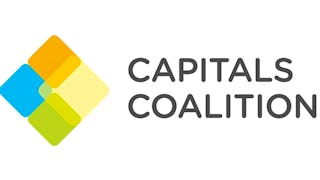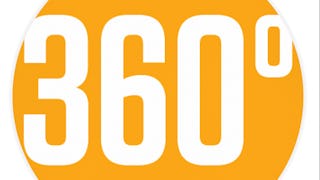In this course, you will learn about a well-researched tool for building a more equitable economy: “employee ownership.” You will learn what it is, how it differs from traditional business ownership models, and the forms it can take. You will learn how employee ownership can share wealth and profits with employees--while making businesses more productive. You will learn what the research shows about the benefits of this tool for employees, retiring business owners, and the economy.


Recommended experience
What you'll learn
How businesses can be designed to share ownership and profits with employees.
New options for business succession.
Facts about wealth inequality.
Skills you'll gain
- Succession Planning
- Employee Engagement
- Compensation Strategy
- Economics, Policy, and Social Studies
- Case Studies
- Business Modeling
- Compensation and Benefits
- Business Transformation
- Governance
- Research
- Collaboration
- Economic Development
- Leadership and Management
- Business Development
- Entrepreneurship
- Diversity Equity and Inclusion Initiatives
- Social Justice
Details to know

Add to your LinkedIn profile
See how employees at top companies are mastering in-demand skills

There are 4 modules in this course
In this course, you will learn about a well-researched tool for building a more equitable economy: “employee ownership.” You will learn what employee ownership is, how it differs from traditional business ownership models, and the forms it can take. You will learn how employee ownership can share wealth and profits with employees--while making businesses more productive. In the first week of the course, you will learn about how businesses are commonly owned. By the end of the first week, you will understand how employee ownership differs from common ownership models...and you will be able to name three relevant economic trends. Find links to more resources by clicking "Download" below the videos in this lesson. Let's get started.
What's included
12 videos5 readings3 assignments2 discussion prompts
Next we look more closely at four specific types of employee ownership: the Employee Stock Ownership Plan or ESOP, the worker cooperative, equity compensation, and the employee ownership trust. We will examine how these types of employee ownership work, how they differ from one another, and their prevalence. Then we will dive deep into understanding the historic roots of modern employee ownership. By the end of this module, you will have acquired a basic understanding of four key types of employee ownership. You will be able to visualize how several companies are successfully sharing ownership with employees. And you will understand how some ideas supporting employee ownership and profit-sharing trace back to the earliest founding of the United States, while the cooperative tradition has roots in Black and marginalized community experiences. Throughout this module, we will learn from several different scholars and experts.
What's included
8 videos4 readings2 assignments
Scholars have generated an enormous amount of evidence suggesting that employee ownership can strengthen firm performance, survival, and job stability, improve employee economic well-being, and address wealth inequality. In this module, you will learn some of the most important research findings, findings that are relevant to real-world practice. By the end of this module, you will understand several important takeaways from the research.
What's included
9 videos3 readings2 assignments
Welcome to the final part of the course. This section introduces basic information about implementing two forms of employee ownership, the ESOP and the worker cooperative. The two company founders who you met earlier will share more about how they adopted employee ownership. Tracy Till is co-founder of a company that became an ESOP. Jarret Schlaff co-founded a worker cooperative. Both will tell you why their business became employee owned, and how they and their colleagues did it. Both will describe important steps in the process and lessons they learned along the way. We have included links to optional, supplemental, instructional resources. By the end of this portion of the course, you will know much more about how one business owner sold the business she co-owned to employees through an ESOP, and how a different organization became a worker cooperative. You will take away a basic understanding of the key steps in the process, knowledge of important questions to ask, and resources for finding more detailed guidance.
What's included
10 videos2 readings2 assignments1 peer review1 discussion prompt
Explore more from Leadership and Management
 Status: Preview
Status: PreviewUniversity of Michigan
 Status: Preview
Status: Preview Status: Preview
Status: PreviewCapitals Coalition
 Status: Preview
Status: PreviewUniversity of Toronto
Why people choose Coursera for their career





Open new doors with Coursera Plus
Unlimited access to 10,000+ world-class courses, hands-on projects, and job-ready certificate programs - all included in your subscription
Advance your career with an online degree
Earn a degree from world-class universities - 100% online
Join over 3,400 global companies that choose Coursera for Business
Upskill your employees to excel in the digital economy
Frequently asked questions
To access the course materials, assignments and to earn a Certificate, you will need to purchase the Certificate experience when you enroll in a course. You can try a Free Trial instead, or apply for Financial Aid. The course may offer 'Full Course, No Certificate' instead. This option lets you see all course materials, submit required assessments, and get a final grade. This also means that you will not be able to purchase a Certificate experience.
When you purchase a Certificate you get access to all course materials, including graded assignments. Upon completing the course, your electronic Certificate will be added to your Accomplishments page - from there, you can print your Certificate or add it to your LinkedIn profile.
Yes. In select learning programs, you can apply for financial aid or a scholarship if you can’t afford the enrollment fee. If fin aid or scholarship is available for your learning program selection, you’ll find a link to apply on the description page.
More questions
Financial aid available,
¹ Some assignments in this course are AI-graded. For these assignments, your data will be used in accordance with Coursera's Privacy Notice.


